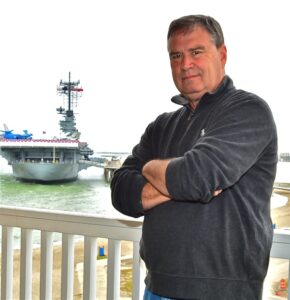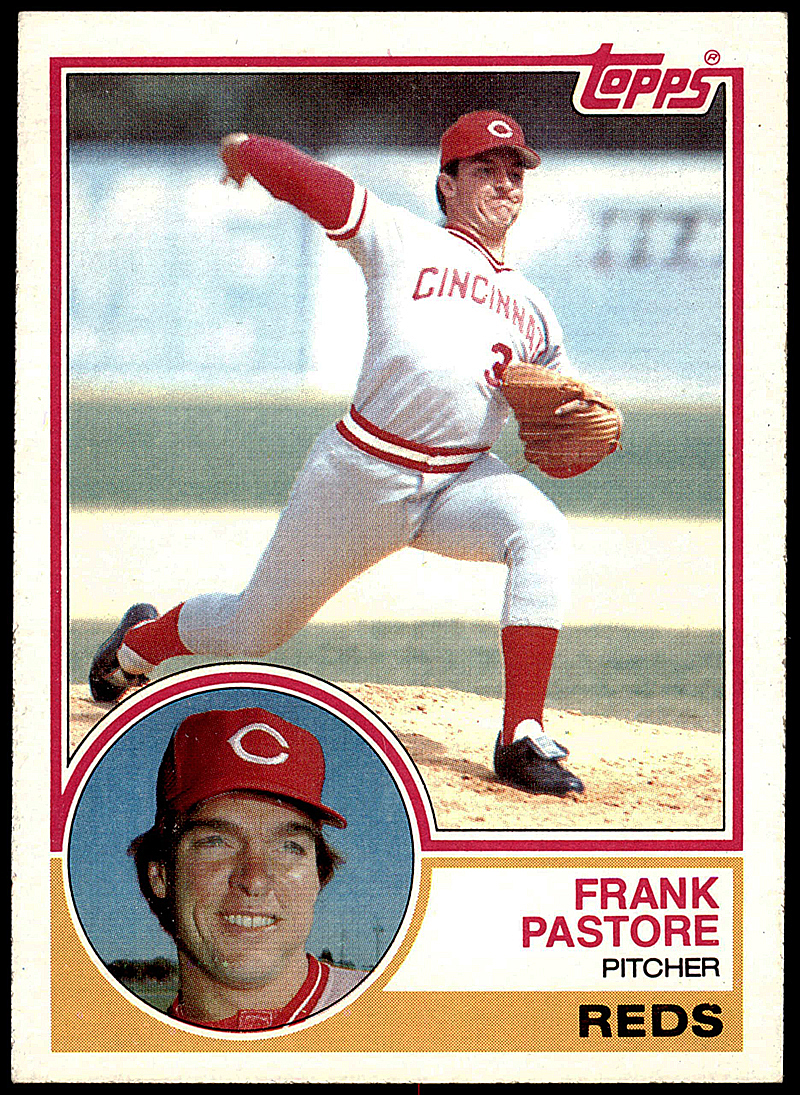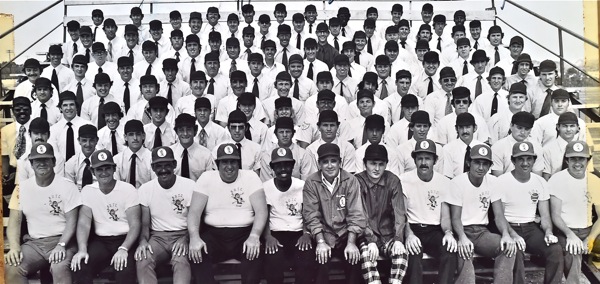An old lineup card reminded me of a different life, a different dream…my own, and that of former Reds’ pitcher Frank Pastore. Dateline: Indianapolis, 1979.
 There’s a cardboard box in the attic of my house with some books, a few pictures, some baseball cards, and a stack of old legal pads from my four years of playing college baseball at Ohio State…and eight years of umpiring baseball in the minor leagues, from the mid-70s to the early 80s.
There’s a cardboard box in the attic of my house with some books, a few pictures, some baseball cards, and a stack of old legal pads from my four years of playing college baseball at Ohio State…and eight years of umpiring baseball in the minor leagues, from the mid-70s to the early 80s.
A friend from Columbus back then, Bob Surtman, was my motivation to get into umpiring after I suffered an arm injury my senior year. Surtman, himself, had worked in the minors back in the 60s, before giving it up and settling down in Columbus where he worked thirty five years as an account exec for Coca-Cola. He always called umpiring an easy way of paying your bills before you had to get serious about paying your bills. “Then you have to go get a real job,” he’d say.

Columnist Sonny Fulks writes OHSAA sports and Ohio State baseball for Press Pros Magazine.com.
So I took him up on it, ranking third in a class of about seventy five at the Bill Kinnamon Umpire School in the winter of 1975. Getting an assignment out of school, I worked that summer in the Rookie Gulf Coast League, the following year in the Florida State League, two years in the Southern League, and three years in the American Association. The most I ever made was $2,000 a month, plus a little per diem. That was in Triple A, and after the ’81 season I took Surtman’s advice and got serious about paying my bills. I got a real job.
But in that cardboard box I found this week a memento, such as it is…the lineup cards from my first time working home plate in Triple A, April 7, 1979. It was in Indianapolis, where the Reds’ Triple A team played at the time, and they played the Omaha Royals (Kansas City’s Triple A team) that night. I smiled as I read the names in the batting order – some old and familiar names.
Ronnie Oester played shortstop for Indianapolis. Paul O’Neill played in right. Donnie Werner was the catcher. And Harry Spilman played first base. The starting pitcher that night for the Indians was one of the Reds’ young phenom arms, and one in which they held great hope for the future. Drafted as a 17-year-old in 1975, Frank Pastore was just 21 that spring, threw hard, threw with command, and along with Mario Soto, Bruce Berenyi, Jay Howell, and Charlie Leibrandt the Reds believed that they had the young pitching they needed to pair with Tom Seaver (acquired the year before from the Mets) to reprise the glory days of the Big Red Machine.

Pastore was one of the Reds’ young phenom arms – their hope for the future – paired with hall of famer Tom Seaver.
It was Pastore’s first start of the season. A good-looking kid from California, Frank was a ‘dandy’. He had an air of confidence about him that few other 21-year-old pitchers had, and for that reason the Reds had the farm director and GM Dick Wagner in the stands that night to watch. Pastore knew it, and played it to the hilt. When he went to the mound he picked up the baseball that I had tossed out to start the game and marched it right into home plate, requesting a better one. I knew him from the previous season when we were in Double A together, and we were familiar with each other.
“Big night tonight, Sonny,” he said with a wide smile. “The ‘suits’ are here and I’m going to give them something to remember. Give me some good seams (baseballs) and enjoy the show.”
And true to his cockiness, he did just that. Pastore was dominating that night, his fastball (according to the bat boy) hitting 95 on a radar gun they had in the dugout, and 2 or 3 miles per hour faster than he typically threw. He had a great breaking ball, and all I had to do was call strikes. There wasn’t much threat from Omaha. From my notes that I kept after every game, Pastore pitched seven innings, struck out nine, and allowed just three hits. He didn’t walk anyone.

The Hughes Law office, in Urbana, is the presenting sponsor for all OHSAA state tournament coverage on Press Pros. Call them today if they can help you…Ph. 937-398-0520
And when he passed me on the foul line after his final inning he grinned and said, “I could have gone twelve.”
I saw Pastore a couple of more times that year and he did have a good season…good enough that he never pitched again in the minors for the Reds. In 1980 he made the big club and compiled a record of 13-7 with an earned run average of 3.27, working 184 innings, the most he’d ever work in eight big league seasons.
People familiar with the Reds at the time – our own Hal McCoy and Greg Hoard – shared that after that 1980 season Pastore became so enamored with being in the rotation with Tom Seaver that he began to copy many of Seaver’s habits off the field, and tried to mimic the mechanics of his delivery to look like Seaver on the field. It didn’t become him.
Pastore fell to 4-9 in 1981. He improved somewhat to 8-13 in 1982, then 9-12 in 1983. By then the Reds were a shell of the team they were when they had all the big guns from the 70s, and instead of winning a hundred games a year they were losing nearly a hundred. In fact they did lose a hundred – 101 – in 1982.
Pastore began to have some arm issues. He lost that devastating finish on his fastball. And he no longer threw with consistent command. Management became frustrated over his obsession with copying Seaver, and when Seaver left the club after the ’82 season to return to New York someone joked that the Mets asked if Pastore was coming with him?
Frank would hang around for another six years, compiling a career mark of 48-58, all with the Reds except for his final year in 1986, when he appeared in 33 games as a reliever in Minnesota.
Pastore was always a personality and after retiring from baseball he returned to California where he became involved with the Campus Crusade for Christ, eventually receiving his masters degree in theology.
And he once established the record for fastest time to eat a 72-ounce steak. Like I said, he was a ‘dandy’. He did it in 9 minutes, 30 seconds, and his record stood for 21 years, until it was broken by hotdog eating superstar, Joey Chestnut, in 2008.
In January 5, 2004, Pastore became the host of The Frank Pastore Show on a local station in Los Angeles, which became one of the largest Christian talk shows in the United States.
Pastore knew few inhibitions in life and became enamored with riding motorcycles. And even spoke once on his radio show about the possibility of being killed on the Los Angeles freeway because of the negligence of crazy California drivers. That same day he was hit while riding home after work, was thrown from his Honda bike, and he sustained serious head injuries. He died a month later from pneumonia and complications from his injuries.
I eventually worked eight seasons in the minor leagues and people used to ask about the best pitchers and hitters I observed that ultimately went on to play in the major leagues. That list would include Paul O’Neill, of course, and pitchers like Mario Soto, Matt Keough and Scott Sanderson.
But for that one night, in April of 1979, Frank Pastore was as good as anyone I ever saw pitch, face to face – 46 years ago this weekend.
Just as important, he was a good dude.
I’m glad I saved my notes.

My umpire school class from February 1975 (Umpire Development School) in St. Petersburg. Out of all these there were only two that made it to the big leagues. I’m sitting three rows from the top, far left. More significantly, the instructors sitting the front row included Nick Bremigan (American League) John McSherry (National Leage), Eric Gregg (National League), Joe Brinkman (American League), Steve Palermo (American League) Richie Garcia (American League) and Frank Pulli (National League).



